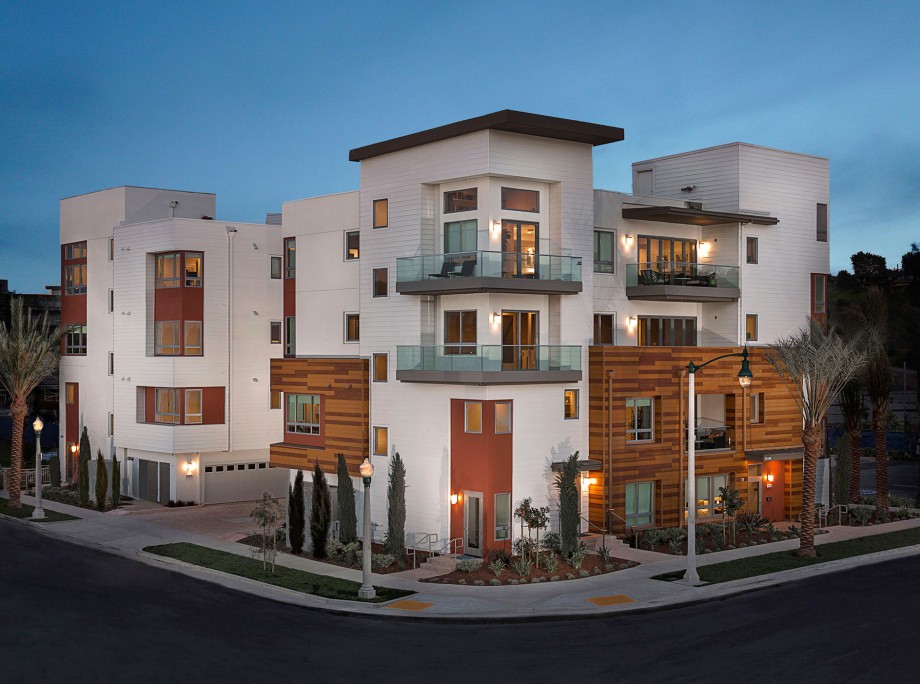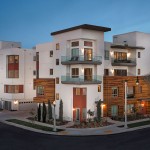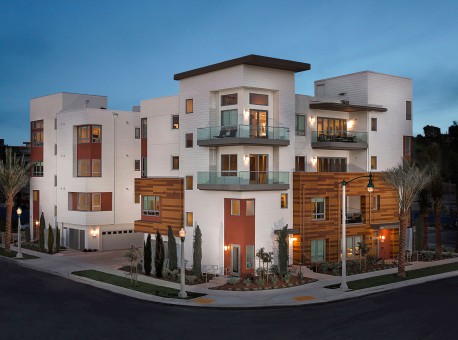Manny Gonzalez – Boomers Move in on Millennial Housing Stock
Builder
July 7, 2016
In South Carolina, baby boomers elbowed out entry-level buyers to snap up single-story floor plans at Riverwalk, a bike-friendly, outdoor-oriented community with recreation and office space on the Catawba River in Rock Hill. Developer Evans Coghill had not foreseen that 55-plus buyers would provide such a boost to Riverwalk’s customer base, says chief marketing officer Alan Banks. “We thought it would all be families,” he says, but older buyers flocked to Riverwalk after seeing a newspaper ad for the downstairs-master ranch houses.
As a result, the Charlotte, N.C.–based firm will include more single-story homes and homes with master bedrooms downstairs in the community’s next phase, with subtle yet simple changes that appeal to boomers such as covered outdoor living spaces, walk-in showers, built-in shelving and storage (to hold a lifetime of treasures), and remote-access security.

A similar scenario occurred at Rancho Mission Viejo, a 23,000-acre community in California that eventually will include 14,000 homes and 17,000 acres of open space. When sales opened for the community’s first phase, developers were surprised to find their target audience (boomers) didn’t flock to its 55-plus communities. Following tradition for multigenerational developments, developers initially included three gated neighborhoods with age-restricted houses and amenities in the project. But it turns out that the baby boomers and empty nesters were just as—if not more—interested in the market-rate neighborhoods intended for young families. In Rancho Mission Viejo’s second village, Esencia, the 55-plus housing is integrated into all-ages neighborhoods, and gates are a thing of the past.
The public builders are taking note of this trend as well. Companies like D.R. Horton and LGI Homes have launched product lines (or, in LGI’s case, entire business models) around building no-frills homes for the first-time buyer. But when these developments open, the builders are finding out that it’s not just millennials who are scooping up the entry-level homes.

“When we launched Express in Florida, 40%, 45% were actually the people buying their last home, not their first home,” said Horton CEO David Auld on the builder’s second quarter 2016 earnings call. “And that’s something we’re taking note of, and making sure that we’re in a position to accommodate those buyers.”
Riverwalk and Rancho Mission Viejo are evidence of a trend that will change the way communities are built and marketed for years, and likely decades, to come. It happened at NorthWest Crossing, a family-friendly traditional neighborhood development in Bend, Ore., where older buyers account for 60% percent of sales, and at Skylar at Playa Vista, contemporary single-story flats designed for young professionals in Los Angeles where more than half the residents in the first phase were 55 and older. Taking note, PulteGroup is building 1,900-square-foot townhouses with flexible three- to five-bedroom floor plans designed to appeal to both millennials and boomers in Minnesota.
As cultural, economic, and geographic factors push entry-level buyers and empty nesters to seek out similar houses and neighborhoods, they’re often competing for the same properties. Younger (and younger-at-heart) baby boomers don’t want to live in age-restricted communities—or anything with “age,” “adult,” “retirement,” or “mature” in the name. They want to live side by side with their kids, the millennials, in the physically and socially active neighborhoods being built for entry-level buyers. Most of these communities are commuting distance to urban centers, which is a plus when it comes to restaurants, culture, and medical care. And lower-maintenance homes and homeowners’ associations have become appealing to boomers as they cash out of the homes with big roofs and yards that they raised their kids in.

Two Generations With the Same Needs
In 2012, Woodley Architectural Group, which serves Southern California and Denver, designed two BUILDER concept homes, one for boomers (Gen B) and one for younger entry-level buyers (Gen Y). Empty nesters loved the smaller, open home without a formal dining room or guest room that had been designed for entry-level buyers, says president Mike Woodley. That project taught him that boomers and millennials have virtually the same needs.
“Boomers are in the process of downsizing and getting rid of junk, and millennials don’t have junk,” he says. “Neither wants a big yard, but they both want a place for a dog.”

Millennials and boomers are more alike than different in everything from technology to ethics, according to a Synchrony Financial report, “Balancing Multi-Generational Retail Strategies.” Millennials are only moderately more likely to own digital devices, according to the report. They’re no more likely than boomers to shop at socially conscious or environmentally friendly retailers (67% of all generations say they would). Both generations are very comfortable with browsing, researching, and shopping online, but they respond differently to marketing messages. The ideal strategy for reaching both, the report states, “is one where the boomer population feels valued and delighted, while the millennial feels excited and interested.”
“Millennials like iPhones, Macs, riding their bikes,” says Manny Gonzalez, principal of KTGY, which designed Skylar at Playa Vista. “I’m 62. We’re finding that people my age like the same sorts of things. We’ve worked with computers, and we’re tech savvy. We may not go to the exact same restaurants as millennials, but we still go to the same downtown area. We still like being part of that whole buzz.”
Gonzalez sees slight differences in how homes should be marketed and designed for the two generations, but he believes their lifestyle needs are completely in sync. Both generations require a reliable high-speed internet connection and want to be near shopping, entertainment, trails, and nature. If recreational opportunities and amenities don’t exist, Gonzalez advises, master developers must create them. The generations that put Woodstock and Coachella on the map value and demand experience.
At Rancho Mission Viejo, that mutual yearning for adventure has naturally propelled intergenerational living as boomers have senior moments and toddlers have tantrums while tilling the fields on community farms, hiking the trails, and making cheese side by side. The over-55 crowd has places to escape screaming children, but senior vice president for community development Paul Johnson says empty nesters are surprisingly social with young families.
“There’s a closer affinity between these two groups than there has been before. They have fun together,” Johnson says. “I think this community is celebrating that closeness, and that’s been a big switch.”
Millennials Are the Next Hot Market
This isn’t all about intergenerational kumbaya, of course. Money always matters. Boomers have been, and continue to be, a dense and formidable economic force, accounting for 50% of all retail spending and 31% of all home purchases in the U.S., and they still have the most disposable income. Their clout will dwindle, however, as they grow older and their numbers fall from 74.9 million in 2015 to 16.6 million by midcentury.

Today, there are more millennials (83 million) than boomers, and they’re about to enter their peak consumption years. Many of them waited longer than previous generations to get married and have kids, and, now in their 30s, they’re entering the housing market for the first time. They represent a hot emerging market that most home builders have ignored.
“This has to be the next market,” says architect Bill Warwick, principal of Norristown, Pa.–based Barton Partners. “In recent years, we’ve been riding the boomer market. At some point, that will come to an end. Where’s the next crop of home buyers coming from? We have to reach out to this market.”
Home builders have paid more attention to boomers because they’re better off financially, thanks largely to history. Boomers launched during a prosperous time for the middle class and compounded assets, while millennials launched (or didn’t) into the Great Recession with crippling student loan debt. Many boomers are fortunate to have home equity (if they didn’t lose it in the housing crisis), but they’re retiring into murky financial waters. Three-quarters of them plan to fund their retirements solely with Social Security, says John Mulville, vice president of the consulting group for Real Estate Economics. Pension plans are in trouble, and 401(k) retirement accounts are just as vulnerable to market corrections now as they were in 2008. Home equity could become many retirees’ only asset.
Mulville says this has already fueled a boomer migration in Southern California as empty nesters sell the coastal homes they raised kids in for $1 million or more and pick up new, lower-maintenance homes in Riverside or San Bernardino for a couple hundred thousand dollars. “People haven’t sacked away the balances they need, and they’re being forced to extract the accumulated equity in their homes and put it in the bank for retirement,” he says. “It’s all very new, and it will really intensify in the next few years.”

Susan Yashinksy, vice president and innovation predictor at Sphere Trending, a strategic consulting firm based in Waterford, Mich., calls this trend “the great McMansion sell-off” and says it has led to higher prices for entry-level product and “a huge shortage of affordable homes.” Though more builders told the BUILDER 100/Next 100 list that they were devoting at least 50% or more of their business to entry-level product in 2016, far fewer are building starter homes and communities than in 2010. As the Washington Post reported earlier this year, “housing has swung from being vastly oversupplied in the bust to being in what more and more is a shortage…mainly for affordable, starter homes.”
Shea Homes and D.R. Horton have done a good job of creating product for entry-level buyers, Yashinsky says, but the home building industry has focused too heavily on meeting the needs of over-50 buyers while largely ignoring millennials. “They’re finally starting to get that they need to build a different kind of home,” she says. “The over-55 market is very healthy, but boomers are also looking for different things than in the past. A lot of the things they want—walkable communities, natural light, open space, outdoor living—are also very important to Generation Now.”
Understanding What Unites Rather Than Divides
The “crosspoint of access” for reaching both millennials and boomers, Warwick says, is homes that are 2,000 square feet or less. In areas where land costs are prohibitive, that can be difficult in single-family home developments. Home builders can better accommodate boomers and millennials in stacked single-story elevator buildings, as Gonzalez learned when his firm designed Skylar at Playa Vista. At Lakeview Landing in Malta, N.Y., Warwick says, developers were surprised to find the equal and opposite effect when young urban professionals began to buy the single-floor units and homes with master suites downstairs that were designed to attract older adults. “Even millennials see single-floor living as an easier way of life,” he says. “They don’t need a bedroom upstairs.”

The summary term, according to Warwick, is broad appeal. The good news is that meeting the needs of both generations isn’t all that complicated. Gonzalez says boomers may want a slightly more elegant aesthetic than millennials, who gravitate toward industrial design, but their needs are otherwise similar. It’s easy enough to use products and finishes such as slip-resistant flooring and discreet, decorative shower grab bars that meet boomers’ needs without alienating millennials (or for that matter, younger-at-heart boomers) and to design a home with flexibility to meet many different needs.
At Rancho Mission Viejo, where the goal is to reach a wide demographic with varied offerings, the key is to understand what unites rather than what divides the generations, Johnson says.
“We’re in the very early stages of learning and being responsive to that, and you can’t be complacent,” he says. “We have to watch and understand, asking questions and carefully working at finding out how this merger’s going to happen so one group doesn’t overpower the other.”
Illustrations by Tomi Um


